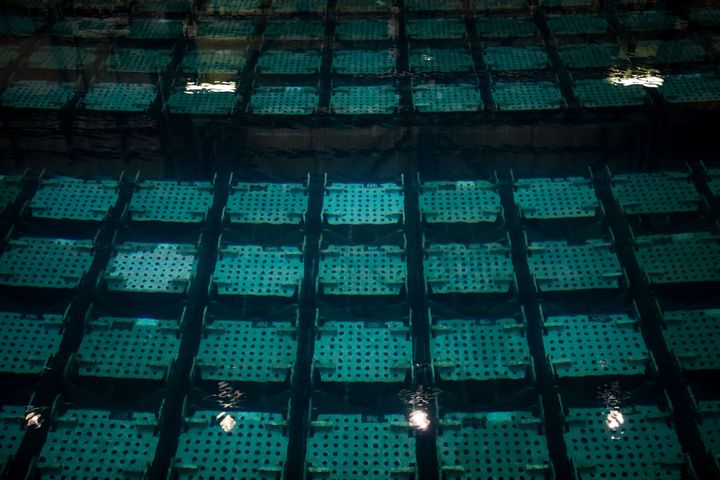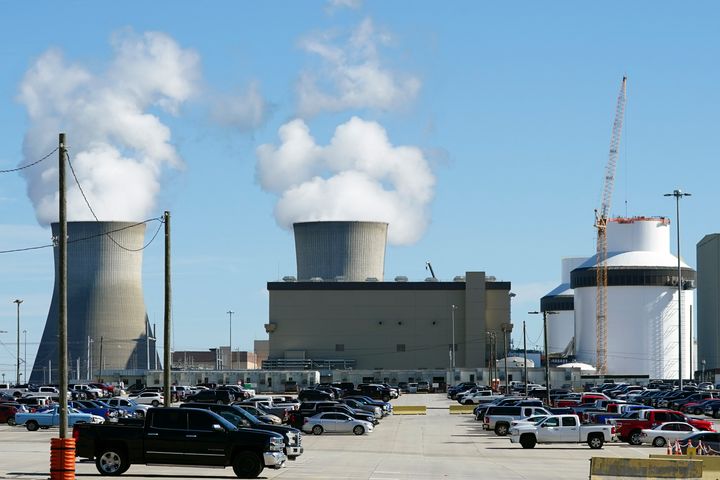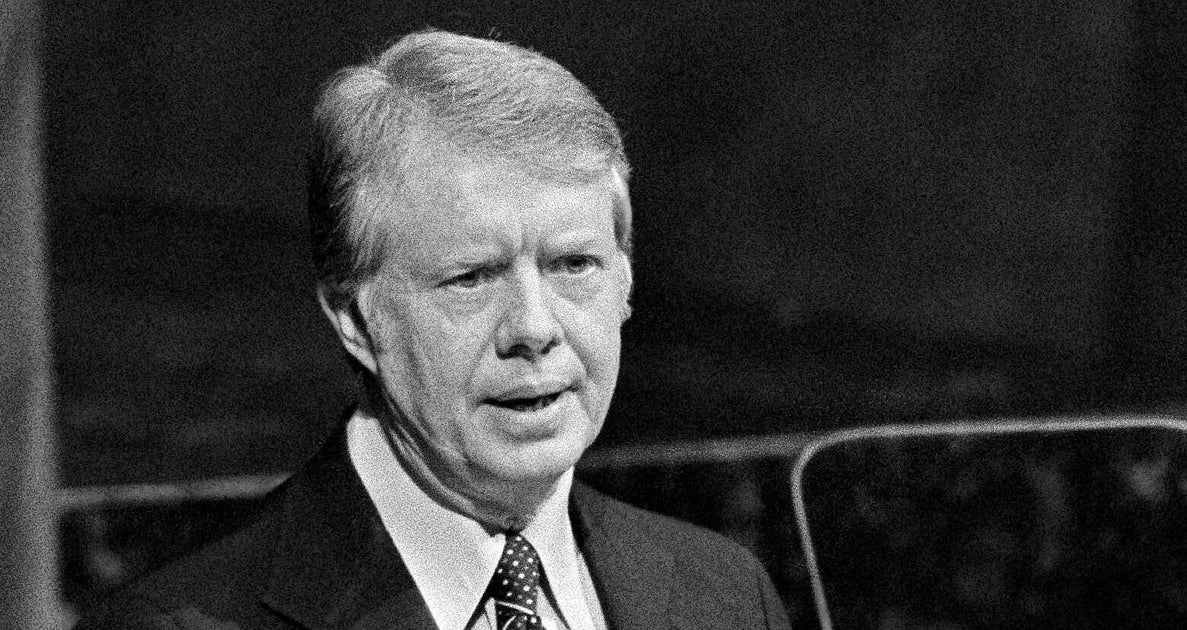The nuclear waste sitting at power plants across the United States contains enough energy to power the country for more than 100 years. But recycling spent uranium fuel was banned in 1977 because President Jimmy Carter feared that nuclear reprocessing could lead to more production of atomic weapons.
In the last 47 years, China, France, Japan, Russia and the United Kingdom have all developed the tools to recycle nuclear waste. The U.S., by contrast, made a plan to bury that spent fuel underground and even built a facility — but then abandoned the strategy without any clear alternative.
The short-term spending bill passed this week in the U.S. House to avert a government shutdown contains the first major funding for commercializing technology to recycle nuclear waste.
The legislation earmarks $10 million for a cost-sharing program to help private nuclear startups pay for the expensive federal licensing process ― and for the first time explicitly makes waste-recycling companies eligible, according to separate documents from Congress explaining what’s in the 1,050-page bill that passed Wednesday.
“There is developing commercial interest in nuclear-fuel recycling,” said Craig Piercy, the chief executive of the American Nuclear Society. “What Congress is doing is providing some assistance to begin exploring the regulatory pathways to allow this to become a commercial reality.”
It’s a relatively small down payment to help launch an industry that may ultimately require billions to get off the ground. But its inclusion in a spending bill with support from both Republicans and Democrats represents a shift on what was once one of the most polarizing issues with atomic energy. While the funding was a particular priority for Rep. Chuck Fleischmann (R-Tenn.), a supporter of nuclear energy, Rep. Alexandria Ocasio-Cortez (D-N.Y.), a left-wing stalwart, also recently came out in support of recycling nuclear waste.
“This is a big deal,” said Edward McGinnis, who spent 30 years working on nuclear power at the Energy Department before becoming the chief executive of the fuel-recycling startup Curio. “It’s the first time that we’re seeing recycling and reprocessing as a funding item. That says a lot. That is a reflection of how much the nuclear policy landscape in a bipartisan way has changed.”

LOU BENOIST via Getty Images
Reprocessing spent nuclear waste involves extracting and dealing with the types of dangerous isotopes, such as plutonium, that can be used in bombs
The industrial conglomerate Allied Corp., which, following a series of mergers over the years, has now become part of the chemical giant Honeywell, partially built the nation’s first reprocessing facility in Barnwell, South Carolina, in the early 1970s.
Then in April 1977, in what was meant to be a show of personal restraint designed to give the U.S. the moral high ground to urge other countries not to develop more enrichment capabilities, Carter banned nuclear waste recycling. The move came three years after India became the first country to develop an atomic bomb since much of the world signed on to the 1968 Treaty on the Non-Proliferation of Nuclear Weapons.
In 1978, the Department of Energy began studying whether the federal government could bury all its nuclear waste permanently in Nevada’s Yucca Mountain. Carter’s successor, President Ronald Reagan, reversed the prohibition on nuclear reprocessing. But the billions of dollars that Allied lost on the facility dissuaded any other companies from attempting to build a recycling plant in the U.S.
Instead, Reagan signed the Nuclear Waste Policy Act in 1982, which shifted responsibility for spent nuclear fuel from the utilities generating the waste to the federal government, eliminating any financial incentive for private companies to come up with a way to deal with the stuff.
In the meantime, construction of new reactors in the U.S. slowed, and vast deposits of uranium across the American West and in trading partners like Canada provided enough fuel.

In the 1990s, however, Bill Clinton’s administration made a deal with the newly post-Soviet Russia to buy any nuclear fuel made from disassembled atomic weapons. Unable to compete with the cheap imports, much of the domestic enrichment industry went out of business.
In the early 2000s, the U.S. planned a new reactor building spree as part of an effort to cut emissions and reduce dependence on imported fossil fuels. Under President George W. Bush, who also pushed to finish building the Yucca Mountain storage facility, Congress funded the creation of a research program on nuclear recycling, called the Advanced Fuel Cycle Initiative.
In 2006, the program was folded into Global Nuclear Energy Partnership, a U.S.-led effort to promote safety standards worldwide and limit which countries could purchase uranium-enrichment technologies.
After President Barack Obama took office in 2009, the Democratic administration removed funding for new waste-recycling research from the Energy Department’s budget. The Obama administration then canceled the Yucca Mountain storage project in what the federal Government Accountability Office later concluded was a political decision made to appease the Nevada constituents of then-Senate Majority Leader Harry Reid (D-N.V.).
Federal law dictates that Yucca Mountain be the first nuclear waste repository in the country, so the U.S. could not consider alternative sites to bury spent fuel until Congress changed the law.
The Nuclear Regulatory Commission abandoned work on a rule to give nuclear recycling companies guidelines for ultimately securing a license in 2021.
“At some point, they’re going to have to pick it back up again,” Piercy said.
The funding in the latest bill could put pressure on the agency to restart the process, he said.
“It doesn’t need to happen overnight…. I don’t think commercial recycling is going to happen in the next decade,” Piercy said. “But it makes sense to start now in clearing out the regulatory barriers to allow commercial recycling.”
In 2022, Russia invaded Ukraine, sparking chaos in energy markets as European democracies sought to stop buying natural gas and oil from Moscow. The skyrocketing prices that came from brief missed shipments of fuel highlighted a key benefit of nuclear power, which is that reactors only need to be refueled every few years, insulating countries from price fluctuations in globally traded fossil fuels.
There was one problem: The Kremlin’s state-owned nuclear company, Rosatom, remained the world’s biggest exporter of nuclear technologies and the only commercial vendor for a key type of uranium fuel needed for next-generation reactors. Moscow’s dominance in nuclear energy is such that, even as the U.S. and its allies have sanctioned virtually every major energy export coming from Russia, Rosatom remains untouchable.
The Biden administration has begun spending millions to generate more of that rare type of fuel, called high-assay low-enriched uranium, or HALEU (pronounced HAY-loo). The House spending bill includes as much as $2.5 billion for producing both traditional nuclear fuel and HALEU at home.
But the White House has so far prohibited funding for HALEU from going to companies making the fuel out of nuclear waste. The Energy Department previously told HuffPost it could not guarantee that HALEU made from nuclear waste would meet the purity standards required for new reactors.
But the agency is already recycling its own waste to generate HALEU, roughly half of which so far has gone to the California-based reactor startup Oklo Inc. (Oklo, too, is working on developing technology to commercialize reprocessing with plans to ultimately recycle all its own fuel, as HuffPost previously reported.) The Energy Department said it plans to finish reprocessing all 10 metric tons of HALEU from an old research reactor at the Idaho National Laboratory in 2028.
“We’re reprocessing with taxpayer dollars right now,” McGinnis said. “We’ve known how to do reprocessing since freaking Oppenheimer. They’re already doing it.”

